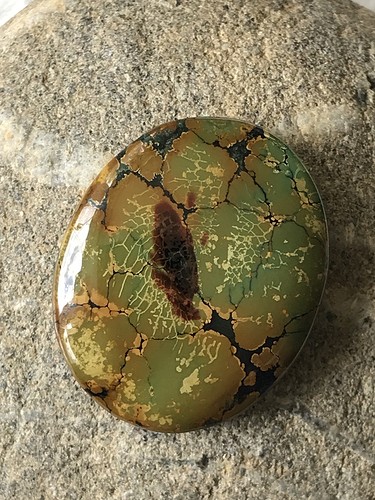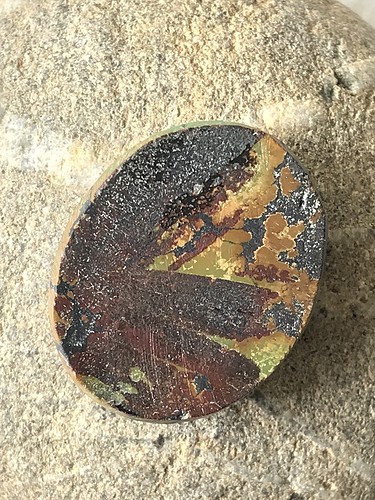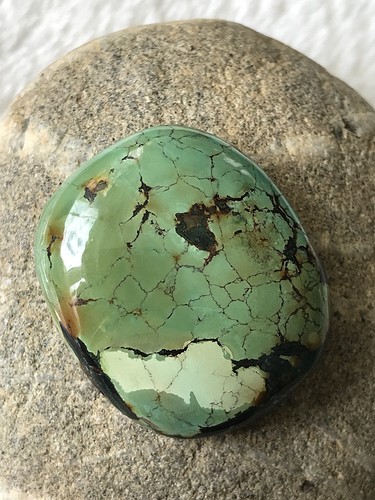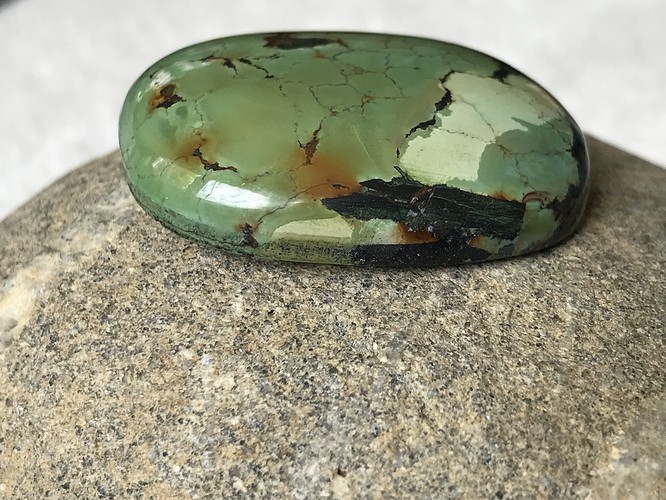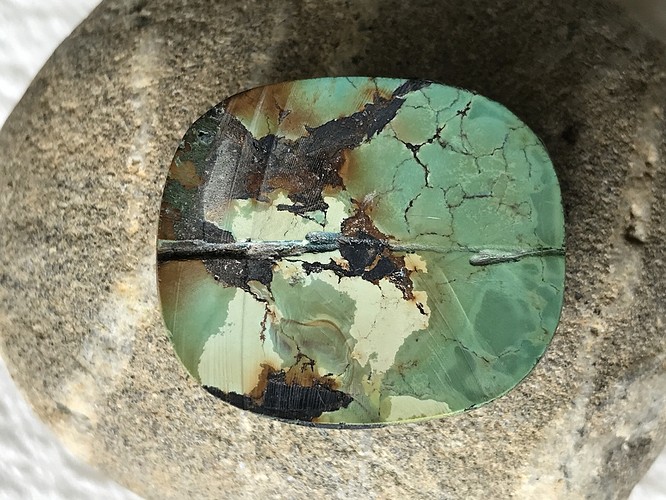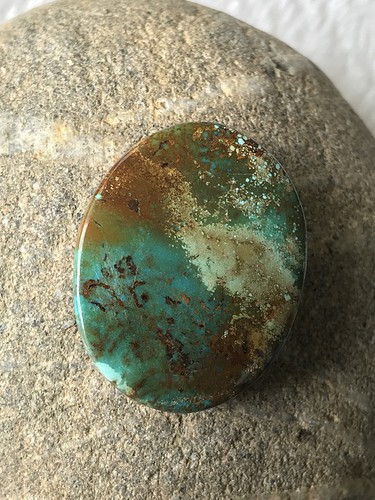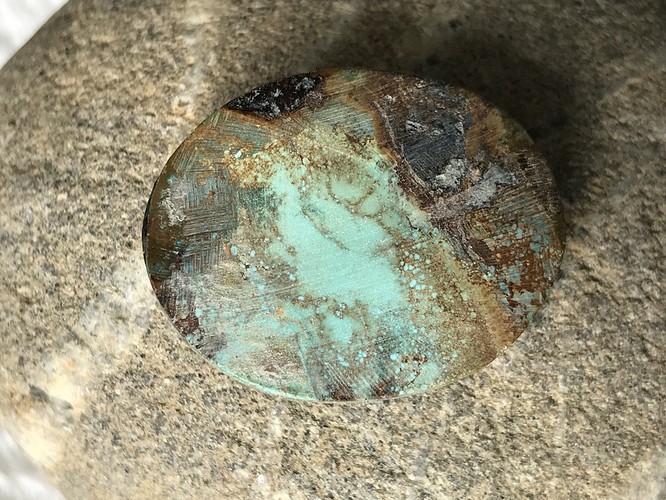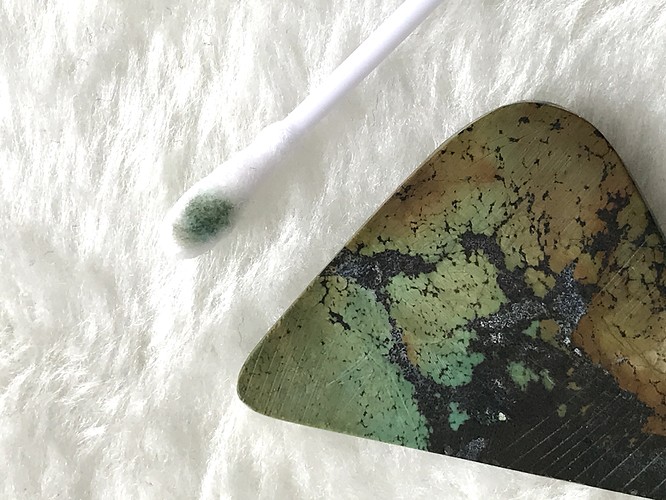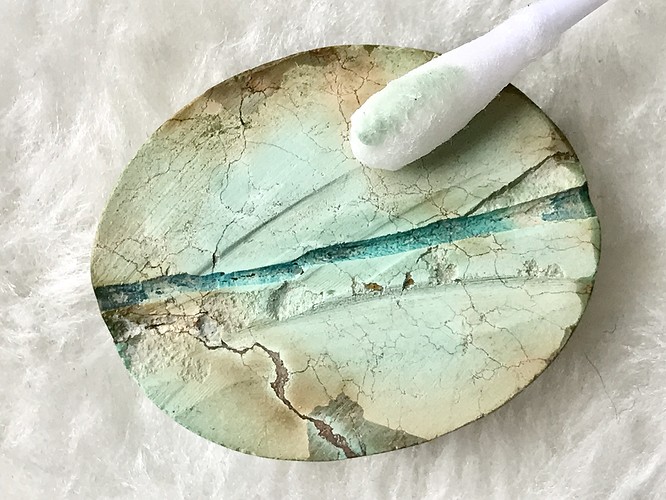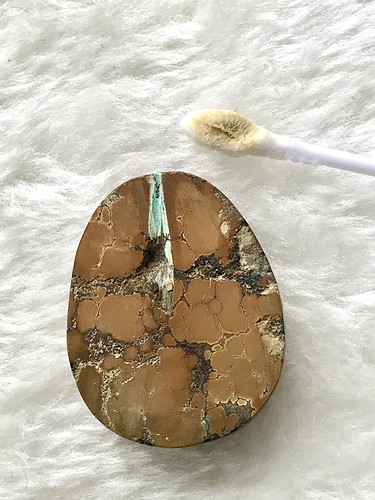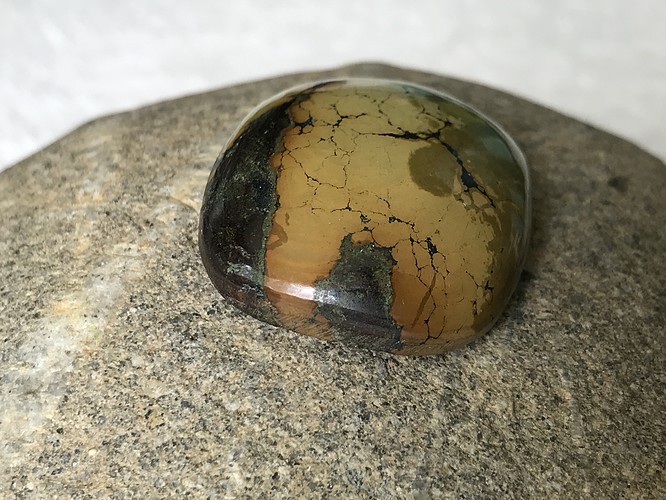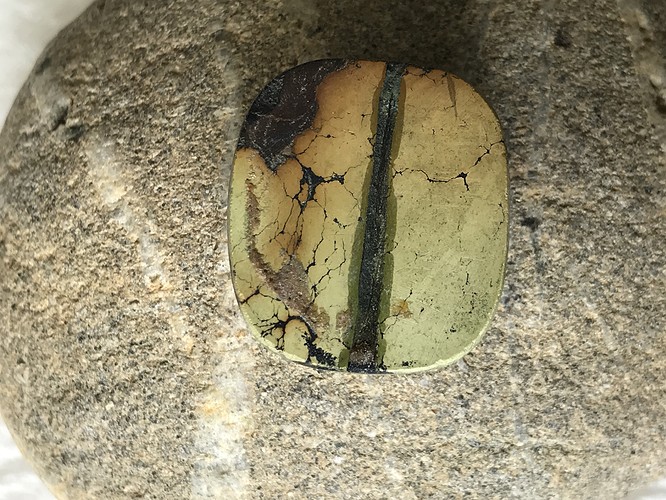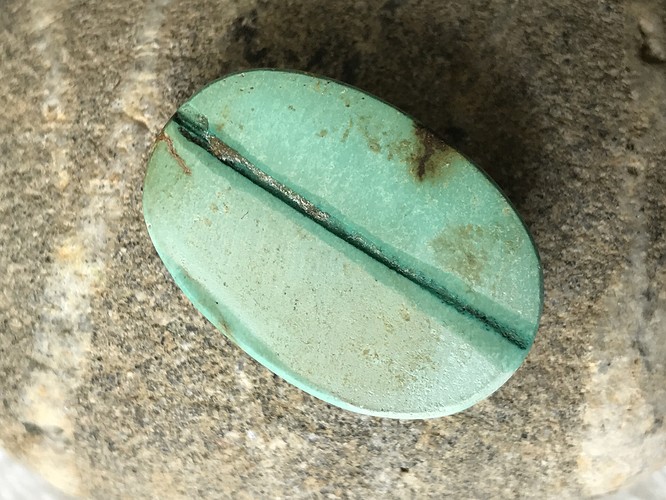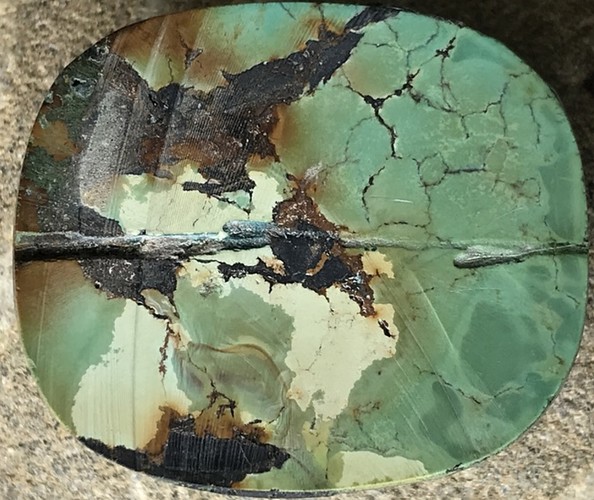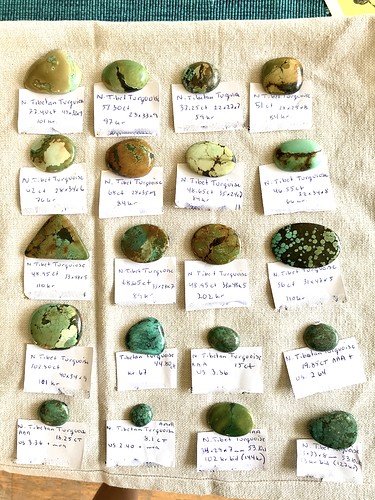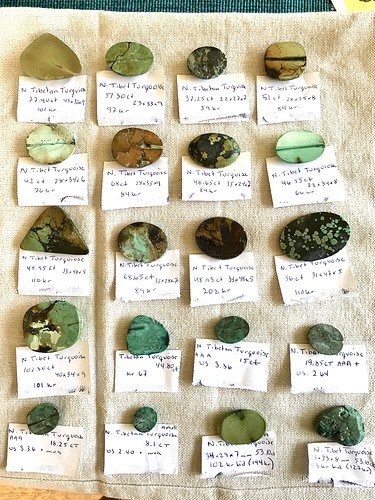Hi everybody. My first post. And I start to say, I’m one of those on low budget (not necessary a choice;)) that buying stones from Asia, but of course, looking around for good deals. So I start my first post asking for help identifying three stones I just received. Is it ‘real’ or ‘fake’, turquoise or not, Tibetan/Chinese or not, enhanced or not. Appreciate any help? The first one - 48.95ct - 33x48x5 - 35$, the second: 102.3 ct - 40x34x9 - 15$, the third 68.65ct - 35x28x7 - 15$
Thanks a lot! Best, Gtboo.
These stones all look good and the first two definitely look like Chinese Turquoise. I am assuming the last piece is, but it could be called lots of things. This style of cut is common with Chinese turquoise and the no backing. Prices seem good. It appears that the stone is most likely stabilized.
Thank you! That’s great to hear.  I was afraid it was color enhanced. I have a few more from the same seller that I would like to ask your opinion on. Should I post it in this thread or make a new one?
I was afraid it was color enhanced. I have a few more from the same seller that I would like to ask your opinion on. Should I post it in this thread or make a new one?  To add a question, why do they call it Tibetan Turquoise if it is Chinese? Are there any running Turquoise mines in Tibet at all?
To add a question, why do they call it Tibetan Turquoise if it is Chinese? Are there any running Turquoise mines in Tibet at all?
Go ahead and post them here. You just assume that what appear to be newer stones comes from active mines, which would be China. I am not sure what active mining is happening in Tibet. The seller, where are they from, are they buying directly from the source? We want our seller to be the best source, did you question them on the stone? If they are reputable and say the stone comes from Tibet I would go with that.
Great! I will do. Just let me know when it’s enough, please. The seller is from India. They don’t have many bad reviews at all - above 99% good. But the thing is, I got worned about this marked, that I should look up for color enhanced and fake. I’ve taken the aceton test on the back of many, and most seem real, but a couple gave of color. So of course I got very sceptical. I asked about it, were he insisted that it was natural. I will add a couple of these for you to see.
The seller is from India. They don’t have many bad reviews at all - above 99% good. But the thing is, I got worned about this marked, that I should look up for color enhanced and fake. I’ve taken the aceton test on the back of many, and most seem real, but a couple gave of color. So of course I got very sceptical. I asked about it, were he insisted that it was natural. I will add a couple of these for you to see.
Okay - that badger not suppose to pop up…
Fixed! Much to learn.
And like this one. No color come of. Why is it so dark in this -what do you call this ‘stripe’ on the backside.
my money is on a previously drilled bead that was sliced in half on the hole creating 2 cabs
if they flat lapped the back to get the drill hole out the cab would have lost weight. less weight less price
This brown one where you mentioned that no color came off the back; that one does not appear to be turquoise. It looks like amber or resin or something.
As for the others, if what @Steve said is right, and I think he nailed it…the beads must be color enhanced, And since you are testing on the inside, that is where they would not be sealed.
Thanks. Yes I was afraid of that. To say, I’m fine with enhancements as long as they tell you so. At least not lie about it. But these others are Turquoise right?
Ahh…that make sense, Steve. Thanks👍
** Tibetan turquoise: Beaming stone of life**
http://www.tibetarchaeology.com/august-2013/
this link should answer a few questions!
Thanks - that looks interesting. Will read!
…indeed interesting. Thanks again. Learned a lot. And I wish my stones were some of those ancient ones  but - no, have to stay realistic and honest…
but - no, have to stay realistic and honest…  But interesting to learn about the cultural value and also the four major sources of turquoise in Tibet: “one is the Gangkar (Gangs-dkar) range in western Tibet, another is near Chamdo (Chab-mdo), and two more lie in the vicinity Bathang and Derge (Sde-dge), in eastern Tibet”. Even though, they were unsure if the mining still were ongoing. Also interesting that the greener the turquoise and the more intrusive the matrix, the lower the value of the stone these days. Additionally, got confirmed the reason for the crack, like XTina mentioned, a bead divided into two cabohons. And last, it was said that 90% of turquoise found on the market has been tampered with in some form or another. The most common is stabilization. Since the stone is so porous it is often soaked in an artificial resin, which improves the color and hardens the surface. The color is also enhanced by heating it with oil or paraffin. Many beads from China have distinctive brown discoloration on them, this is indicative of being too close to the heat during the treating process.
But interesting to learn about the cultural value and also the four major sources of turquoise in Tibet: “one is the Gangkar (Gangs-dkar) range in western Tibet, another is near Chamdo (Chab-mdo), and two more lie in the vicinity Bathang and Derge (Sde-dge), in eastern Tibet”. Even though, they were unsure if the mining still were ongoing. Also interesting that the greener the turquoise and the more intrusive the matrix, the lower the value of the stone these days. Additionally, got confirmed the reason for the crack, like XTina mentioned, a bead divided into two cabohons. And last, it was said that 90% of turquoise found on the market has been tampered with in some form or another. The most common is stabilization. Since the stone is so porous it is often soaked in an artificial resin, which improves the color and hardens the surface. The color is also enhanced by heating it with oil or paraffin. Many beads from China have distinctive brown discoloration on them, this is indicative of being too close to the heat during the treating process.
I love to learn. I have now also put my latest collection of stones to the acetone and flame test - I was thinking - what do I have to lose - if it’s fake, in the meaning of plastic - too bad, but can’t use them, if it’s colored enhanced - okay, then I know that, as long as it’s a real Turquoise, I’m fine with it. And they all passed the flame test. Most passed the acetone test, not all. So the test left is, is it Turquoise or another stone? How do I do that? Any advice? 
I’ve heard about howlite and now I read variscite was common to use for Turquoise ‘look alike’.
a forensic search of your sellers other items and or any comments made on his profile might offer some more clues.
are any of his other items listed as “chunky turquoise bead necklace” or “pre-drilled turquoise bead strands”?
No, nothing like that as I can see. He basically just has loose gemstones. He seems okay, and I have been thrilled about the beauty of his stones, I’ve ordered before. But the I tested - and two gave of some color. And I confronted him, and he insisted that they were natural. So of course I’m afraid to criticise, and be wrong…
